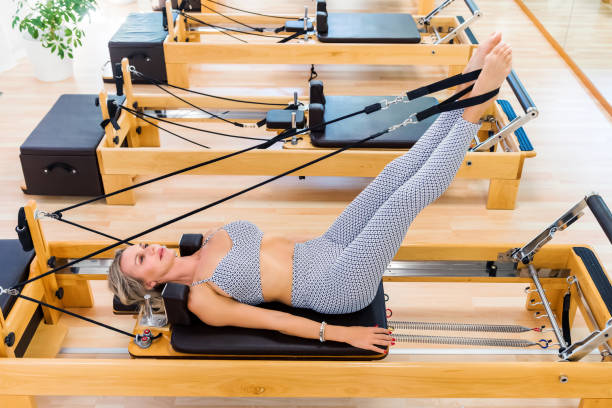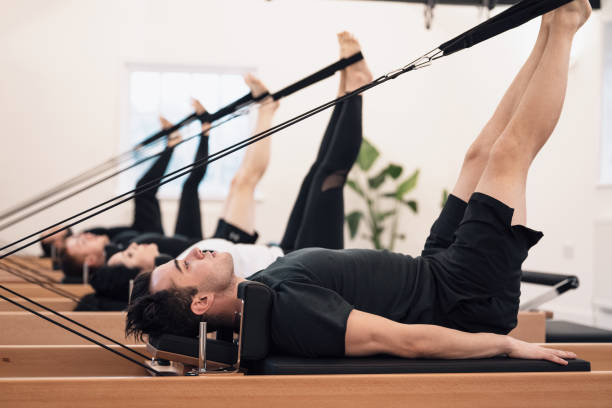A full-body workout, Pilates promotes balanced muscle development. In doing so, it strengthens your body and reduces the risk of injury.
Like other mind-body practices, such as yoga and meditation, Pilates encourages a heightened sense of body awareness. This is not only beneficial during classes but can carry over into daily life.

1. It Strengthens Your Core
Whether you have chronic back pain or just want to strengthen your abdominal muscles, pilates Caulfield can do the trick. It’s not the same as crunches; the exercises require focus and precision that help build core strength.
A strong core is a foundation for balance and mobility, and it helps reduce injuries. Unlike many other workouts, Pilates encourages good posture and emphasizes a balanced approach to movement.
It helps build muscle endurance by challenging the muscles to move against gravity and resistance, like when doing a tricep pushup or using spring resistance with a reformer machine. Pilates also builds muscle strength by encouraging eccentric contractions, which occur when a muscle is lengthened while under tension — like a bicep curl or lifting your feet off the ground during a plank.
2. It Strengthens Your Back
Pilates focuses on the core muscles, which helps strengthen and stabilize the spine. That can help reduce back pain and stiffness as well as improve balance, flexibility and mobility.
Some exercises (the rolling movements, the Saw and extreme flexion or extension of the spine) are not suitable for those with back pain, as they can put too much stress on the delicate spinal discs. But in general, Pilates is very gentle on the joints.
It also puts a lot of emphasis on proper alignment and body awareness. That can help you become more aware of when you’re hunching or slumping, which might contribute to your back pain. And it emphasizes slow, controlled movements that can help you relax and focus on your breathing, which can also reduce your stress levels.

3. It Strengthens Your Legs
Pilates is a great way to strengthen the muscles in your legs, especially the quads and glutes. “This allows the body to move more fluidly with the core,” says Wonesh. “You don’t have the swaying that you might get from some other exercises.”
In addition to building strength, a strong core also helps prevent back pain. One study found that Pilates was as effective as other types of exercise for reducing back pain and improving function in people with low back problems.
The secret to a successful Pilates routine is practicing with an instructor who can help you master the movements and learn proper technique. That’s why she recommends signing up for classes at a studio instead of an online platform. The smaller class sizes can ensure you’re getting the personalized attention you need to avoid injury.
4. It Strengthens Your Arms
A reputable Pilates program taught by a skilled instructor can help you strengthen and tone your arms. In fact, the arm workouts are a key component of the full-body Pilates workout.
The moves may look simple, but they require a lot of precision and control. As a result, they can be challenging even for people who are already in good shape.
Unlike other strength workouts, Pilates can also improve your balance and coordination. This, in turn, can lower your risk for falls and other injuries.
Additionally, a strong core can reduce your risk of back pain. That’s because a weak core can force the body to compensate for movements, increasing your risk for injury.
5. It Strengthens Your Hips
Pilates incorporates exercises that require multiple muscle groups to work together and improve your overall coordination, which is a huge benefit. That kind of balance and coordination can help reduce your risk for injuries, as SELF reports.
The strong focus on body awareness in Pilates may also help you learn to give yourself grace when you aren’t able to hold a plank for as long as you could last week, says Marie. This can translate to a more accepting attitude towards your personal fitness journey in general.
The hip, the largest weight-bearing joint in your body, is surrounded by some of the biggest muscles, and many of them are strengthened during Pilates exercises like lunges on the reformer (front and side) and the side leg lift series. Then there’s the famous saw pose, in which you twist your torso to touch one hand to your opposite foot.
6. It Strengthens Your Thighs
Pilates is a full-body workout that will help you tone your legs. The exercises focus on precision over power and are often done with low-impact, making them a good choice for people with joint issues or injury concerns.
Unlike other forms of strength training that tend to bulk up the muscles, Pilates can help you build muscle endurance and strengthen your core without adding too much bulk. This makes it an excellent complement to your cardio and weight training routines.
Whether you want to take your Pilates practice at a studio where instructors can keep an eye on your form or try it at home, the key is to start slow and work your way up to higher intensity levels over time. It’s also important to find a qualified instructor, since this will ensure you are using correct technique and avoid injuries.
7. It Strengthens Your Calves
Pilates is a low-impact exercise with many health benefits. It strengthens your core, boosts flexibility and improves balance. It can also reduce stress and anxiety by lowering cortisol levels. Plus, it’s been shown to enhance sports performance in recreational athletes and even elite sports men and women.
The best thing about Pilates is that it’s accessible to almost anyone. However, it’s important to speak with your doctor before starting any new exercise regimen, especially if you have a chronic medical condition. And if you have any concerns about whether or not Pilates is right for you, seek the guidance of a qualified instructor. They’ll make sure you’re performing the exercises correctly and will help prevent injuries. Then, with patience and time, you’ll see results.
